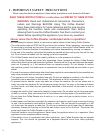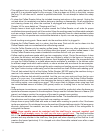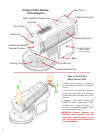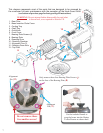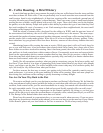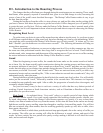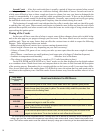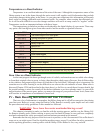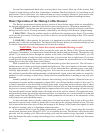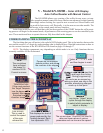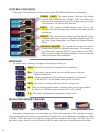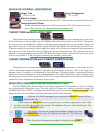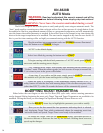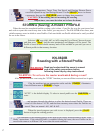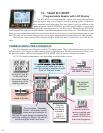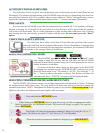
12
For your first experimental batch select a variety that is easy to roast. Most any of the varieties from
Central or South America will do fine. Guatemalan, Colombian, Brazilian, Bolivian, or Costa Rican are all
good choices. These coffees have very loud cracks that are easy to recognize. Moreover, these are also rela-
tively inexpensive, so if anything goes wrong, you don’t have to feel too bad about discarding the beans.
Basic Operation of the Hottop Coffee Roaster
The Hottop‘s programmed roasting process consists of three distinct stages which are controlled by
the internal microprocessor, and unless you decide to interrupt the process, all function automatically.
1. WARM UP - during this time the roaster pre-heats much like you would do with your oven before
baking, but in this case it is entirely automatic, controlled by the Hottop Coffee Roaster’s programming.
2. ROASTING - When the machine signals to add beans the roasting process begins. The roasting
cycle can take up to nearly 25 minutes, but can be as short as you decide depending on how YOU want to
roast the beans!
3. COOLING - After roasting, for best taste, it is important to cool the roasted coffee as quickly as
possible, this is called the cooling cycle. The Hottop Coffee Roaster features an external cooling tray, and
it cools the beans down to room temperature in less than five minutes.
WARNING: Never leave the roaster unattended during a roast!
For around the first few minutes after pouring the beans into the Hottop Coffee Roaster not much
will happen. Nonetheless, it is important to remain near the machine and pay attention. Through this early
period, if you watch the beans through the window in the front of the Hottop Coffee Roaster, you will
see the gradual change of color from their original color, to green to tan, then to light brown. If you keep
a small portion of un-roasted beans close by you can easily compare the un-roasted beans to the changes
taking place to the color of the beans in the roaster.
Make a mental note of how much volume the beans take up when first poured in. You will notice a
definite increase in volume as the beans expand during the roast. The various aromas of the smoke change
throughout the roast as well. Initially, there is just a little steam that has a pleasant grassy scent and a
relatively high humidity. As the roasting progresses, this turns into a more dense smoke that smells like
hay, and later somewhat like making pancakes or baking bread. Again, steam and smoke are normal by-
products of coffee roasting, so don’t worry. Smoke does not mean that there is anything wrong with your
machine.
Sound is probably the most reliable indicator when roasting your first batches. When the beans are a
cinnamon-brown color and the temperature is about 400 F. you will hear the first sounds of “first crack.” It
is almost impossible to miss these loud and fairly sharp snaps. Apart from being an obvious sign of where
the beans are in the roasting process, the sound of first crack also tells you that you should start monitoring
the process even more closely. Although little has happened up to this point, the roasting will proceed very
fast from this point forward, and the beans will change a lot in the next few minutes. Throughout the roast,
and particularly nearer the end of the selected roast time, it is normal to see a certain amount of steam and
smoke escape from the Hottop Coffee Roaster. Smoke production will increase as the temperature of the
coffee beans rises and with darker roasts.
As first crack ends, there is usually a short pause of around one minute. Now is time to be very alert,
and listen for second crack, which is a much softer sound, and can be a bit more difficult to hear. This may
also be around the time when you will hear the beeping of the Hottop Coffee Roaster that signals it is near
the end of its roasting cycle or is signaling a temperature alert.
If the machine doesn’t eject the beans automatically, push the “Eject” button about the time that
second crack becomes active (about 422-425 F.) or even before this time. The Hottop Coffee Roaster then
proceeds with the cooling cycle. When the cooling cycle ends the machine beeps repeatedly to indicate
that it has finished the entire roasting and cooling process, and then shuts itself off. At that time disconnect
the roaster.



